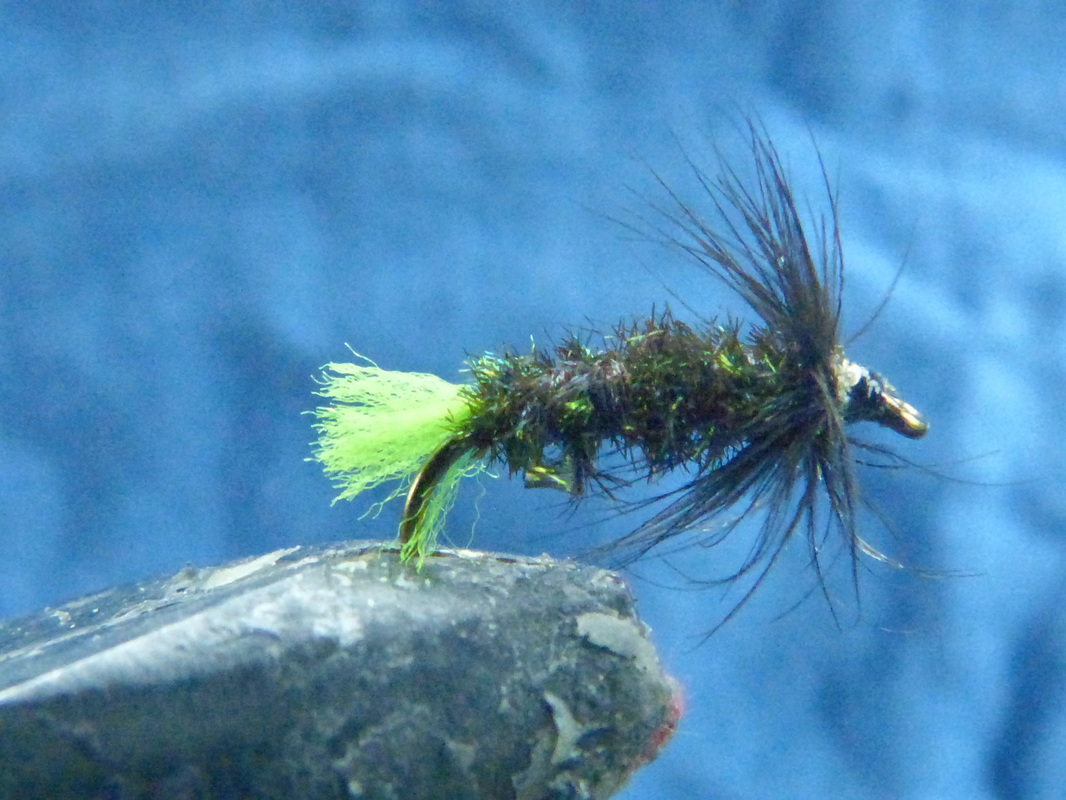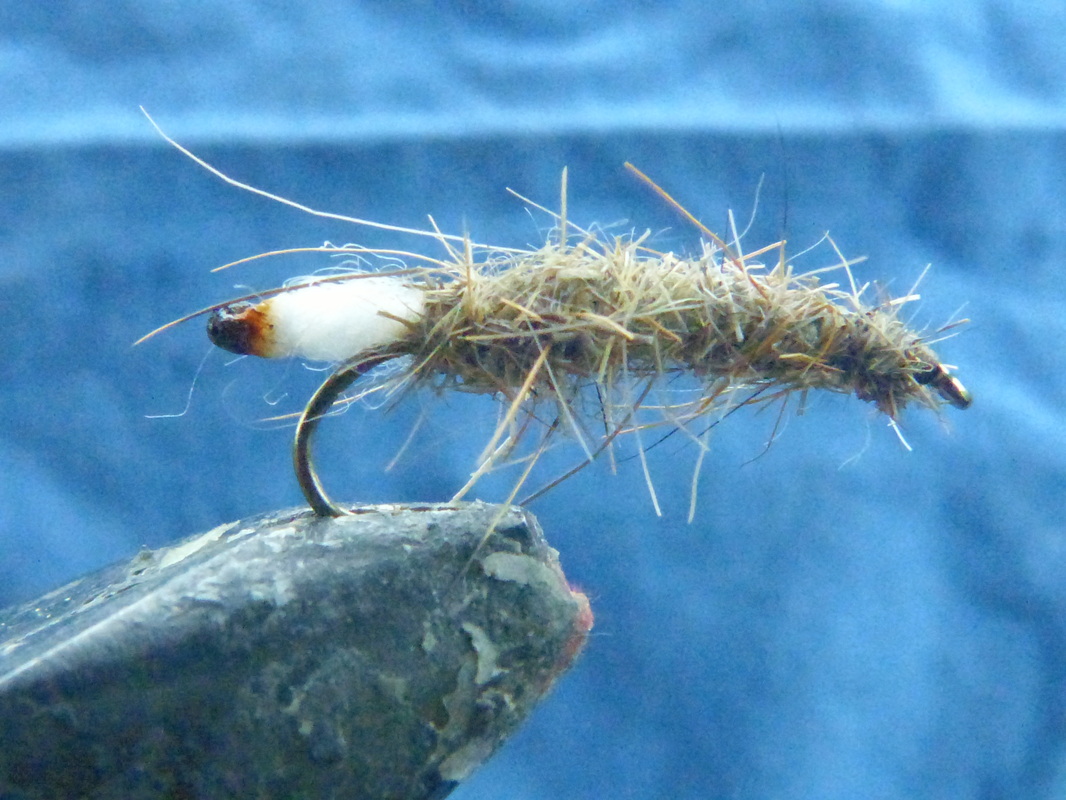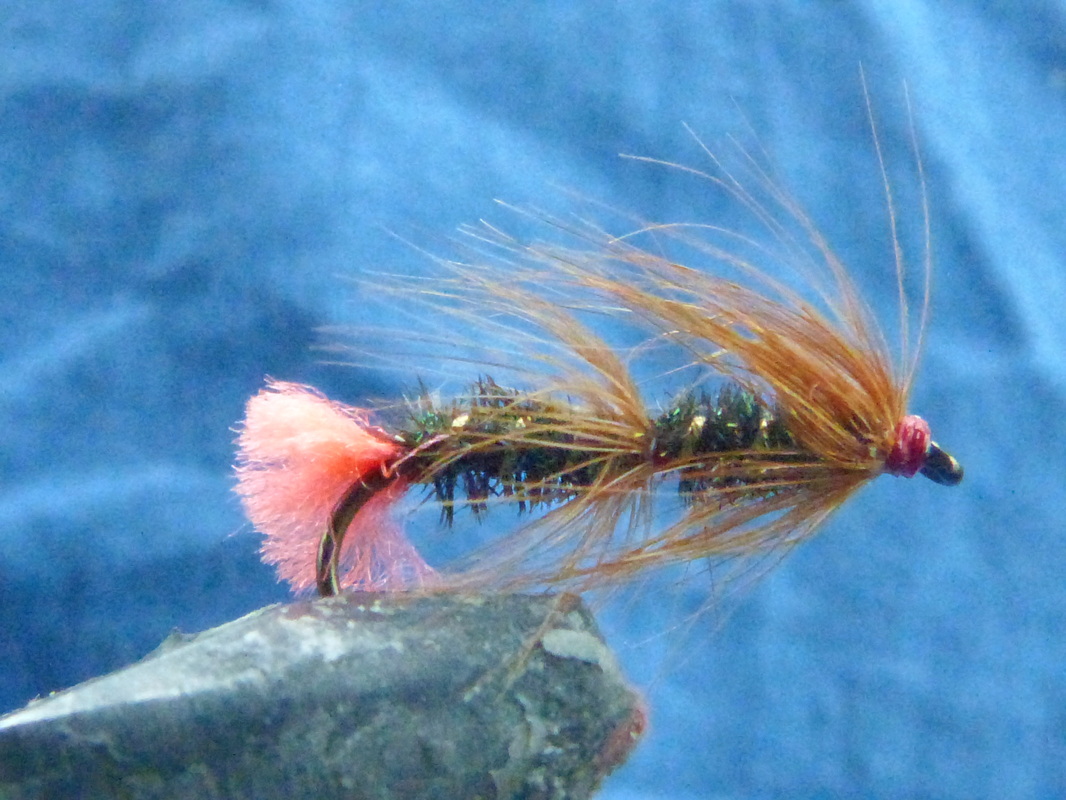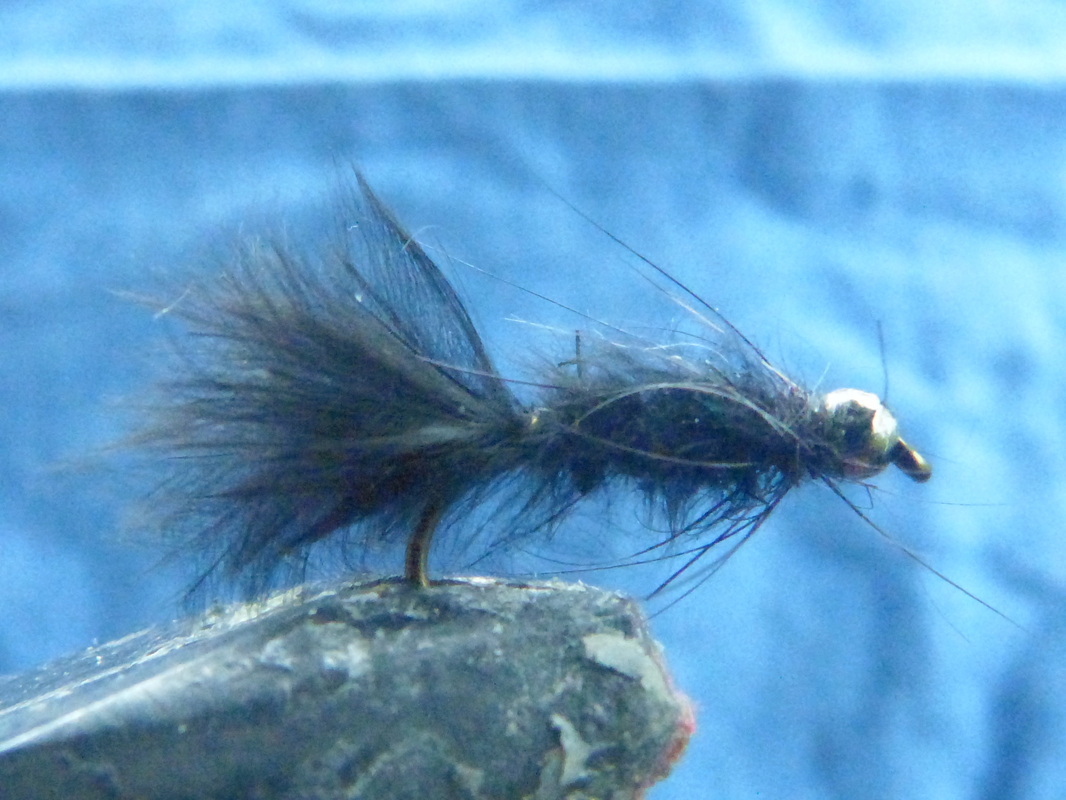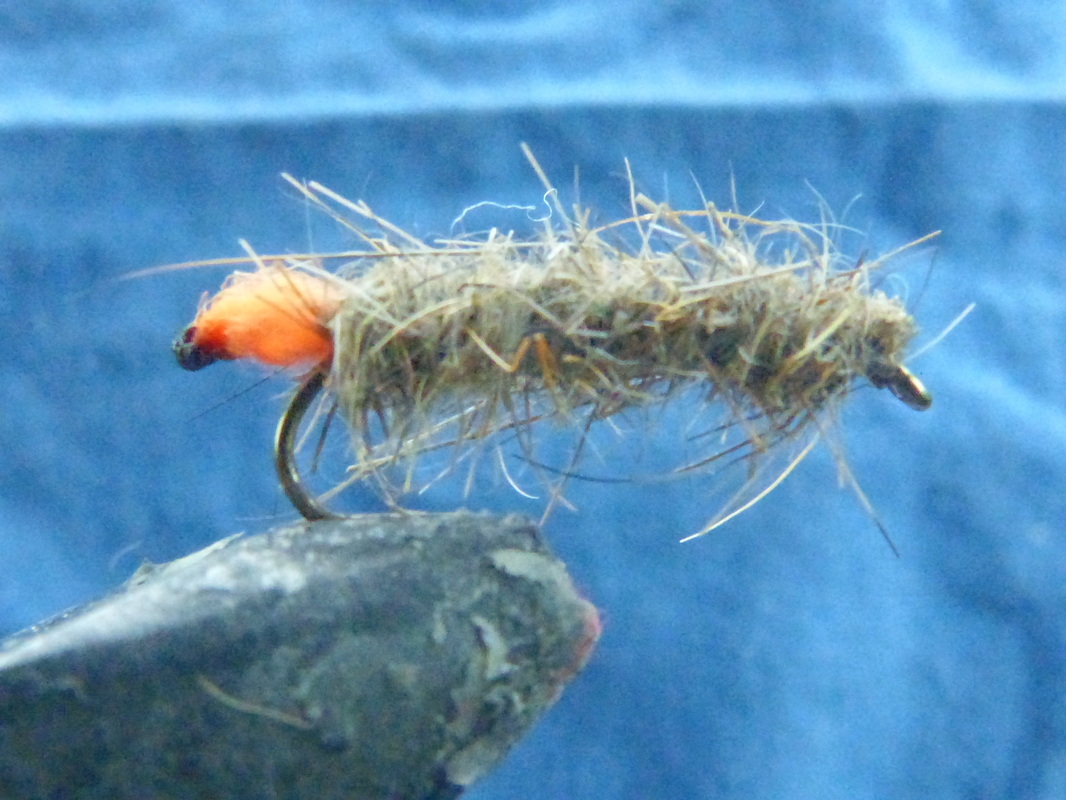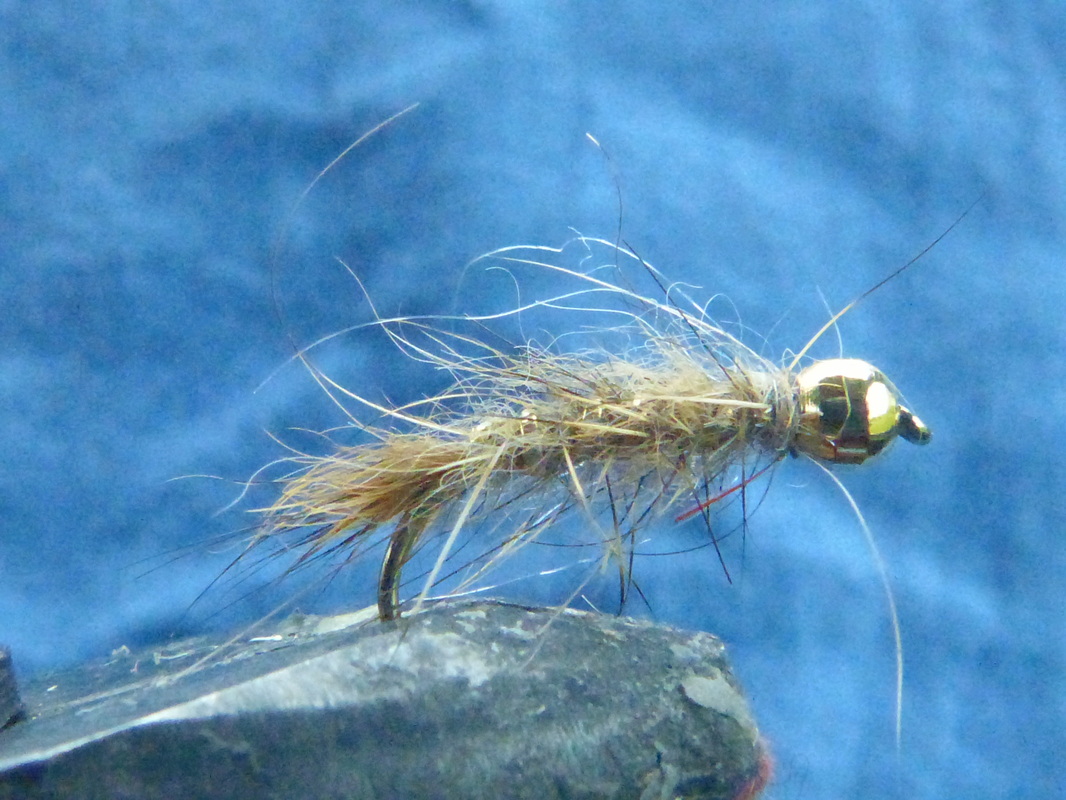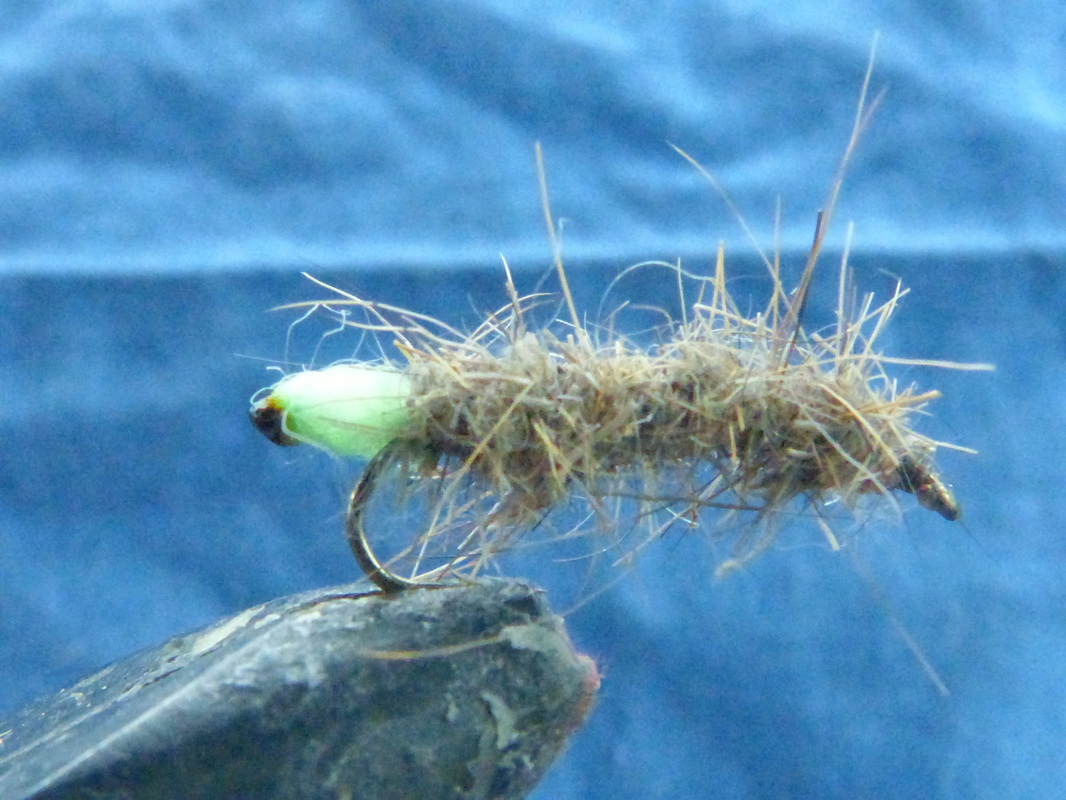CADDIS LARVAE.
Trout eat cased caddis in very large numbers most of the year round.
The 33 recorded species found in Shetland build cases of a variety of shapes and forms and different species favour different habitats in the loch from rocks, sand, grave, mud, weeds, moving water and hatch at different times of day and month. Some species have free swimming larvae that vary in colour from green through to white.
Trout feeding on caddis larvae are most likely to be opportunistic feeders and as such exact imitation of the various cases and species is unnecessary, however with the exception of the free swimming species the fish are likely to be feeding head down collecting them from the bottom and from rocks so when targeting fish feeding on caddis larvae flies should be fished deep and slow and as such flies tied on heavy hooks, weighted with lead wire or metal beads help get them down quickly.
Cased caddis are a year round food but arguable early season is the best time to specifically target fish feeding on them because there is unlikely to be any insects hatching that will move the fish higher up in the water. Fish feeding on cased caddis are likely to be opportunistic feeders on the lookout for anything they can find such as shrimp snail and as such suggestive patterns are probably best that take on the general size and profile of a cased caddis.
Triggers to build into patterns might include, long thin profile, peacock heel wrapped round a long shank hook, shaggy mess of the case, earthy Mixture of seal furs well picked out. Most of the species have a lighter toned body with a darker head and legs that crawl across the bottom. White or fluorescent hotspots. Mobile hen or partridge hackle.Slow moving near or on the bottom.
Patterns include
Worm fly, Mike Forbes White Tag, Montana and variants,Gold bead Damsel nymphs,Woolly bugger, Hares ear nymphs,Stick Fly
Trout eat cased caddis in very large numbers most of the year round.
The 33 recorded species found in Shetland build cases of a variety of shapes and forms and different species favour different habitats in the loch from rocks, sand, grave, mud, weeds, moving water and hatch at different times of day and month. Some species have free swimming larvae that vary in colour from green through to white.
Trout feeding on caddis larvae are most likely to be opportunistic feeders and as such exact imitation of the various cases and species is unnecessary, however with the exception of the free swimming species the fish are likely to be feeding head down collecting them from the bottom and from rocks so when targeting fish feeding on caddis larvae flies should be fished deep and slow and as such flies tied on heavy hooks, weighted with lead wire or metal beads help get them down quickly.
Cased caddis are a year round food but arguable early season is the best time to specifically target fish feeding on them because there is unlikely to be any insects hatching that will move the fish higher up in the water. Fish feeding on cased caddis are likely to be opportunistic feeders on the lookout for anything they can find such as shrimp snail and as such suggestive patterns are probably best that take on the general size and profile of a cased caddis.
Triggers to build into patterns might include, long thin profile, peacock heel wrapped round a long shank hook, shaggy mess of the case, earthy Mixture of seal furs well picked out. Most of the species have a lighter toned body with a darker head and legs that crawl across the bottom. White or fluorescent hotspots. Mobile hen or partridge hackle.Slow moving near or on the bottom.
Patterns include
Worm fly, Mike Forbes White Tag, Montana and variants,Gold bead Damsel nymphs,Woolly bugger, Hares ear nymphs,Stick Fly
